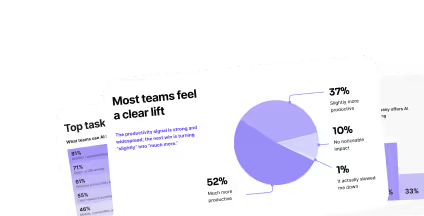Meet Miroslav: Principal product designer at Symphony
As a principal product designer at Symphony with over two decades of industry experience, I lead product design initiatives for the music industry, focusing particularly on audio distribution solutions. My role involves managing client relationships and delivering innovative solutions to some of the world's most influential companies. Beyond my design leadership responsibilities, I'm deeply passionate about mentoring aspiring designers and helping them advance in their careers.
Symphony stands as a technology company dedicated to empowering entrepreneurs and executives worldwide. We're building a future where exceptional engineers can deliver world-class work unrestricted by borders, geography, or citizenship. Our partnerships with Fortune 5 category leaders and ambitious founders focus on creating real business value through deep collaboration. At Symphony, we tackle the most ambitious technology projects with a foundation of kindness and curiosity.
The challenge: Scaling learning across a distributed design team
Our design organization consists of 36 highly skilled professionals ranging from mid to senior levels. Most team members come from UI design backgrounds and have developed strong focus in UX design and design thinking methodologies. Many have also cultivated expertise in digital product development, creating a rich tapestry of complementary skills.
As our team grew, we encountered several significant challenges in maintaining consistent skill development:
Geographical distribution: With team members spanning multiple time zones, coordinating traditional training sessions became increasingly difficult.
Individualized development needs: Each designer required a personalized approach to skill growth based on their unique strengths and experience levels.
Ensuring practical application: We needed to bridge the gap between theoretical learning and practical implementation in client projects.
Standardizing design communication: Despite strong individual capabilities, we lacked a unified design language that could enhance collaboration and client presentations.
In a competitive industry serving prestigious clients, these limitations threatened to compromise our ability to deliver consistently exceptional work. We needed a solution that could scale professional development while maintaining flexibility for our distributed team structure.
The transformation: Creating a sustainable learning environment
At Symphony, I've always believed in the power of continuous learning. This philosophy drove our search for a solution that could support an ongoing learning environment for our design team.
After evaluating multiple options, we selected Uxcel Teams as our platform of choice for several strategic reasons:
Comprehensive design curriculum: Uxcel offers extensive training resources across UX design, design thinking, and product development—aligning perfectly with our team's focus areas.
Flexible engagement model: The platform enables team members to participate in daily training exercises at their own pace and schedule, accommodating our distributed team structure.
Gamification elements: Features like badges and leaderboards have transformed learning from an obligation into an engaging activity that motivates consistent participation.
Standardized design language: The platform has helped establish a common vocabulary and understanding of design principles across our diverse team.
The implementation process was remarkably smooth. Our designers displayed immediate enthusiasm for the opportunity to upgrade their skills, appreciating the company's investment in their professional growth. What might have been a challenging adoption process instead became a catalyst for cultural transformation.
Business impact: Tangible results and cultural shift
The implementation of Uxcel Teams has delivered measurable improvements across multiple dimensions of our design practice:
Enhanced design quality: Team members consistently apply industry best practices and innovative approaches learned through the platform.
Accelerated project timelines: Our standardized design language has improved communication efficiency, reducing revision cycles and speeding delivery.
Strengthened client relationships: More confident presentations and clearer articulation of design decisions have enhanced client trust and satisfaction.
Increased team collaboration: Shared terminology and methodologies have broken down silos between designers working on different projects.
Higher job satisfaction: Team members report greater fulfillment and engagement, attributing this directly to the investment in their professional development.
Perhaps most significantly, we've witnessed a transformation in how our teams communicate both internally and with clients. The standardized language of design has improved clarity and effectiveness, resulting in faster turnaround times, reduced rework, and ultimately better outcomes for our clients.
Strategic insights for design leaders
Based on our experience transforming Symphony's approach to design excellence through Uxcel Teams, I offer several key insights for fellow design leaders:
1. Invest in continuous learning as a strategic priority
Design proficiency isn't static. In today's rapidly evolving technological landscape, continuous learning isn't optional—it's essential for maintaining competitive advantage. By prioritizing ongoing skill development, you equip your team to anticipate industry trends rather than merely responding to them.
At Symphony, we've seen how this investment translates directly to business outcomes through improved work quality, client satisfaction, and team retention. The return on investment manifests in both tangible deliverables and strengthened client relationships.
2. Foster a learning culture through accessibility and engagement
For professional development to succeed at scale, it must be both accessible and engaging. Traditional approaches often fail because they treat learning as separate from daily work rather than integrated within it.
By selecting a platform with gamification elements and flexible scheduling, we've transformed learning from an occasional event into a daily practice. This approach removes barriers to participation while making skill development genuinely enjoyable.
3. Leverage standardized design language for operational excellence
Perhaps the most unexpected benefit has been the development of a unified design language across our team. This standardization has improved communication efficiency while enhancing the quality of client interactions.
By establishing shared terminology and methodologies, we've reduced misunderstandings, accelerated decision making, and improved our ability to articulate the strategic value of design choices to stakeholders.
The broader transformation: Design excellence as competitive advantage
What began as an initiative to upskill our design team has evolved into a fundamental competitive advantage for Symphony. By fostering a culture of continuous learning, we've positioned ourselves not just as service providers but as strategic partners who consistently deliver innovative solutions.
Looking forward, we anticipate continued growth in our team's capabilities as we maintain our commitment to professional development. This foundation of ongoing learning enables us to take on increasingly complex challenges while delivering exceptional value to our clients.
Our experience with Uxcel Teams demonstrates that when learning becomes an integral part of organizational culture rather than a separate initiative, it transforms not just individual skills but collective potential. For design teams seeking to maximize their impact, this approach represents the difference between incremental improvement and transformative excellence.





.svg)
.svg)
.svg)
.svg)
.svg)
.svg)
